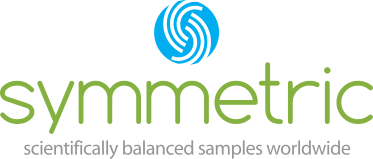- Call Us:
- 817-649-5243
- info@symmetricsampling.com
Have A Low-Incidence Sample? Don’t Take No For An Answer!
June 29, 2023
Have A Low-Incidence Sample? Don’t Take No For An Answer!
Marketing research technology makes it feasible and cost-effective for in-house consumer insights teams to conduct marketing research for themselves. As long as the incidence rate is higher than 5%, it is not difficult to source sample from most panel vendors and complete the online survey with any number of DIY software platforms. However, once you get into very low-incidence samples, things get trickier. And with increasingly precise segmentation, targeting, and personalization, low-incidence samples are often what you need to get accurate information.
Transactional Vs. Consultative
Unfortunately, the sample industry has become very transactional over the past several years. Instead of working with clients to solve tough sampling challenges, low-incidence sample requests are given answers like “we can’t do that” or “we can get you 40,” but not the quota you require. A consultative sample partner will work with you to get the project done while also helping you understand the ”'why”and ”how” behind making it happen.
The vast majority of sample companies are online-survey focused. Their sample source is online, and their participants have signed up to complete surveys online. Once you have a project where the incidence is low, or the type of people you are looking for are not easily available online, it might seem like you have hit a dead end. This is where having a consultative approach helps tremendously.
Symmetric is a sampling company built from a full-service market research company. Our entire team has worked in full-service market research and has both a deep understanding of and extensive experience with different methodologies. These tried-and-true methods are still very relevant today and are key to low-incidence project success. We often use a hybrid approach instead of giving up on reaching low-incidence groups or accepting a lower number of completes. In addition to collecting data via an online survey, we supplement with a phone survey to collect the same data or mail postcards that direct respondents to your online survey.
Many researchers avoid hybrid methodologies because they might add unnecessary complexity, time, or cost to the project. However, with fewer and fewer respondents wanting to participate in surveys and the increase in low-incidence projects, hybrid methodologies will soon become commonplace. These projects have nuances that are different from simple online surveys. The key to making hybrid surveys work is managing these nuances throughout the process. But even better is selecting a sample partner who has the experience to plan for and manage the nuances for you.
Planning For Analysis
One of the challenges of a hybrid methodology is making sure all the data is compatible and easy to analyze on the back end. On hybrid projects, we recommend that all survey data is collected into one database. For online/phone projects, this means using a slightly modified version of your online survey. The phone interviewers log in and input responses directly into the online survey. You can do this by modifying the login page and allowing multiple completes from a single location (so the IP address of the call center will not trigger those records being flagged as duplicates).
For mail-to-online surveys, the process is similar. The letter or postcard sent to respondents should include a simplified URL for your online survey. The respondents type that URL into their browsers and are linked directly to the online survey. Respondent data from the postcard sample will be collected into the same database as the traditional online sample respondents.
Having all of your data in one place makes it easier on you. Make sure that you select a sample partner who has the experience to make recommendations that make the process as smooth as possible.
But What About…?
There are three major concerns that researchers have about hybrid methodologies:
-
Will all the data look the same? The simple answer is no, not exactly the same on some occasions. For traditional online samples using a panel, your respondents are people who choose to take surveys online. Further, they probably take many surveys online as most panel members belong to multiple companies’ panels. They might complete dozens of surveys a week (or sometimes a day if there are no strict guidelines at the sample company on how often their respondents can take surveys). Obviously, they have had both positive and negative experiences with those surveys, and they bring their perceptions into your research. Your respondents from phone and mail samples are not experienced survey-takers like online panelists, so view them as raw and inexperienced. You definitely must analyze your data by sample source to understand those differences and how they might impact your results.
-
Won’t hybrid methodologies take too long? Obviously, with data collection for a simple general population online survey taking less than a week, yes, a hybrid methodology will take longer. But what is too long? In our experience, using a hybrid approach with half online sample and half phone sample, data collection is completed in 2-3 weeks in the field. (That is after we make questionnaire modifications for the call center or the postcards are created and mailed.) That timeframe is acceptable, especially when you consider the alternative of not getting the information at all or getting information from too few respondents for reliable and accurate data.
-
Won’t it cost too much? Hybrid methodologies will add cost to a simple online survey. But maybe not as much as you expect. If you can collect at least part of your data online, that will help you hold the line on costs. A sample partner with experience in conducting hybrid-methodology projects can also find ways to control costs. Even better, a sample partner with access to call centers (either their own or centers they have thoroughly vetted with hybrid approaches) can help even more with keeping costs down. As for using postcards to bring respondents to your online survey, it is usually not cost-prohibitive, even when including the costs of production and postage.
Summary
Whether your sample is constrained by geography, by product or brand usage, attitudinally, or by some other characteristic, don’t give up when your sample provider tells you that it can’t be done at all, or that you can’t get the sample size you need. It can be done! You just need to find a sample partner with the experience, capabilities, and confidence to work with you on a hybrid methodology.
Check out this blog for more information and examples on this topic:
https://www.symmetricsampling.com/blog/key-sampling-success-get-creative-1/
Symmetric Sampling takes a consultative approach to every project to find the best way to get the job done. Contact us today to talk about your tough sampling challenges – we will make it work!
